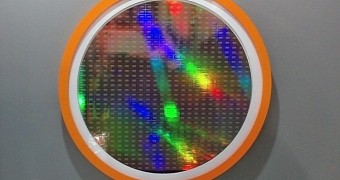It is rather known that the next generation of AMD Arctic Islands architecture based on 14nm FinFET process will come on HBM2 stacked memory technology. However, what's new is that they will come in real pst-GDDR5 sizes of 8GB to 16GB sizes.
Although the release of the ground-breaking AMD Radeon R9 Fury X graphics card, as the first graphics solution to feature HBM technology, was a debatable success, AMD plans to quickly move its next-gen HBM2 equipped flagships to maturity and provide enough memory to really compete with a potentially HBM2-equipped NVIDIA flagship in 2016.
Counting on its next Arctic Islands architecture with chips with codenames like "Greenland," "Baffin" and "Ellesmere," AMD hopes it will be able to cover all of its market share, from high-end to low-entry models, recovering this way the ground it keeps losing worldwide against NVIDIA. Putting its hopes on "Greenland" as the main enthusiasts-oriented GPU, AMD wants to make sure that it will bear all the right numbers to attract clients and potential buyers that fell for NVIDIA's 12GB of GDDR5 memory present on Titan X.
AMD gets closer and closer to evening the odds with NVIDIA
Equipped with up to 16GB of HBM2 memory, the "Greenland" GPU will be faster and physically smaller, at the same time, than the current top-tier Fiji GPU present on the Fury X. The new possible 14nm process manufacturing will allow for the GPU to be denser, which means it will be much more energy efficient compared to the old generation. According to TweakTown, the new GPU will also feature 15-18 billion transistors, which will surely even the odds with what NVIDIA will develop on its Pascal architecture.
However, SK Hynix can provide much more memory availability for its HBM2 memory standard that can reach up 32GB in size, something that NVIDIA's next-gen Pascal microarchitecture will surely achieve. Right now the battle between the two graphical solution giants revolves around cutting-edge technology versus memory size and GPU frequency.
Although AMD will probably deliver its next-gen 14nm FinFETs GPUs faster than NVIDIA, the latter might arrive later with faster and bigger memory size that would catch enthusiasts attention yet again.

 14 DAY TRIAL //
14 DAY TRIAL //